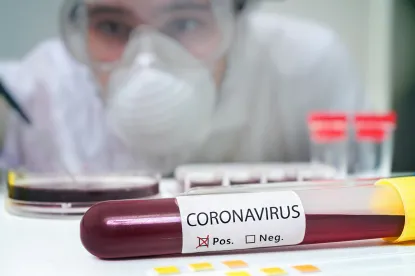On 28 May 2020, England and Scotland introduced contact tracing systems known as “Test and Trace” and “Test and Protect,” respectively. Northern Ireland has been operating a contact tracing system since 27 April 2020, and Wales introduced the “Test, Trace, Protect” system on 1 June 2020.
What is contact tracing?
In all locations within the United Kingdom, the contact tracing system is triggered when an individual “who has symptoms, has a positive test result for COVID-19” from the National Health Service (NHS). At this point, contact tracers will phone, text, or email the affected person and ask him or her to identify all individuals with whom the person has been in close contact. Close contact means “having face-to-face contact with someone” at a distance of less than 1 metre, “spending more than 15 minutes within 2 metres of someone,” or “travelling in a car or other small vehicle with someone (even on a short journey) or close to them on a plane,” in the two days before and since the individual developed COVID-19 symptoms. Those identified close contacts will be notified and asked to self-isolate at home for 14 days in line with government guidance.
There is no statutory obligation on individuals identified as close contacts to self-isolate at the current time, but the devolved governments within the United Kingdom have not ruled out legislation to make self-isolation mandatory should individuals refuse to comply.
What should employers do if an employee is told to self-isolate?
UK government guidance makes it clear that employers are expected to enable employees to adhere to self-isolation guidelines if they are identified as being in close contact with someone diagnosed with COVID-19.
Those employees who meet the earnings criteria will be eligible for Statutory Sick Pay (SSP) of £95.85 (£94.25 before 6 April 2020) from the first day of the period in which they are required to self-isolate. Employers that offer more generous contractual sick pay benefits, however, should consider whether they will provide sick pay at the usual contractual rate to those self-isolating.
Employers that were registered for Pay As You Earn (PAYE) on or before 28 February 2020, and who had fewer than 250 PAYE employees at that date, are entitled to reclaim up to two weeks SSP provided to employees under the Coronavirus Statutory Sick Pay Rebate Scheme “if an employee is unable to work because they:-
-
have coronavirus symptoms;
-
are self-isolating because someone they live with has symptoms;
-
are self-isolating because they’ve been notified by the NHS or public health bodies that they’ve come into contact with someone with coronavirus; [or]
-
are shielding and have a letter from the NHS or a [general practitioner] telling them to stay at home for at least 12 weeks.”
Employers can claim “from the first qualifying day [the] employee is off work if the period of sickness started on or after:
-
13 March 2020 – if [the] employee had coronavirus or the symptoms or is self-isolating because someone they live with has symptoms
-
16 April 2020 – if [the] employee was shielding because of coronavirus
-
28 May 2020 – if [the] employee has been notified by the NHS or public health bodies that they have come into contact with someone with coronavirus”
For the purposes of SSP, “a ‘qualifying day’ is a day an employee usually works on.”
The above scheme will aid small to medium-sized employers with the costs associated with employees having to self-isolate, but it does require the employer to proactively reclaim this amount from Her Majesty’s Revenue and Customs (HMRC) and to keep records of any claims made for three years. HMRC estimates that employers should receive the amounts owed six working days after submission of a claim.
The biggest challenge posed to employers by the new contact tracing schemes may be the prospect of employees being repeatedly told to self-isolate for 14 days following contact with an individual who is diagnosed with COVID-19. This is a possibility that will only increase as lockdown measures are eased across the United Kingdom. Employers may want to consider how they can facilitate working from home and how they can limit cross-contact within their workforces (e.g., by splitting shifts and dividing work areas) in order to avoid a situation where one confirmed case of COVID-19 in the workplace leads to large numbers of employees needing to self-isolate.
Employers may also want to inform employees who have been in close contact with someone required to self-isolate by the contact tracing service to be more vigilant about monitoring themselves for COVID-19 symptoms (i.e., a high temperature and a new, persistent cough). If employers want to provide this information, they may not reveal the identity of the self-isolating employee under the General Data Protection Regulation (GDPR) as employers have a duty to protect the sensitive health information of all employees.
If an employee who is a close contact of a person with a confirmed case of COVID-19 also tests positive for COVID-19, the employer generally has a duty to protect the health of other employees that the infected employee may have been in contact with in the workplace. In this situation, employers may inform affected employees that they have been exposed to a confirmed case of COVID-19, but should adhere to the GDPR and not reveal the infected individual’s identity. Employers may want to ask any employees who have been in close contact with the infected individual to stay home and self-isolate for 14 days consistent with government advice. If the contact tracing system is working efficiently, the contact tracing service would reach out to such employees and the NHS would ask them to self-isolate for 14 days.




 />i
/>i

